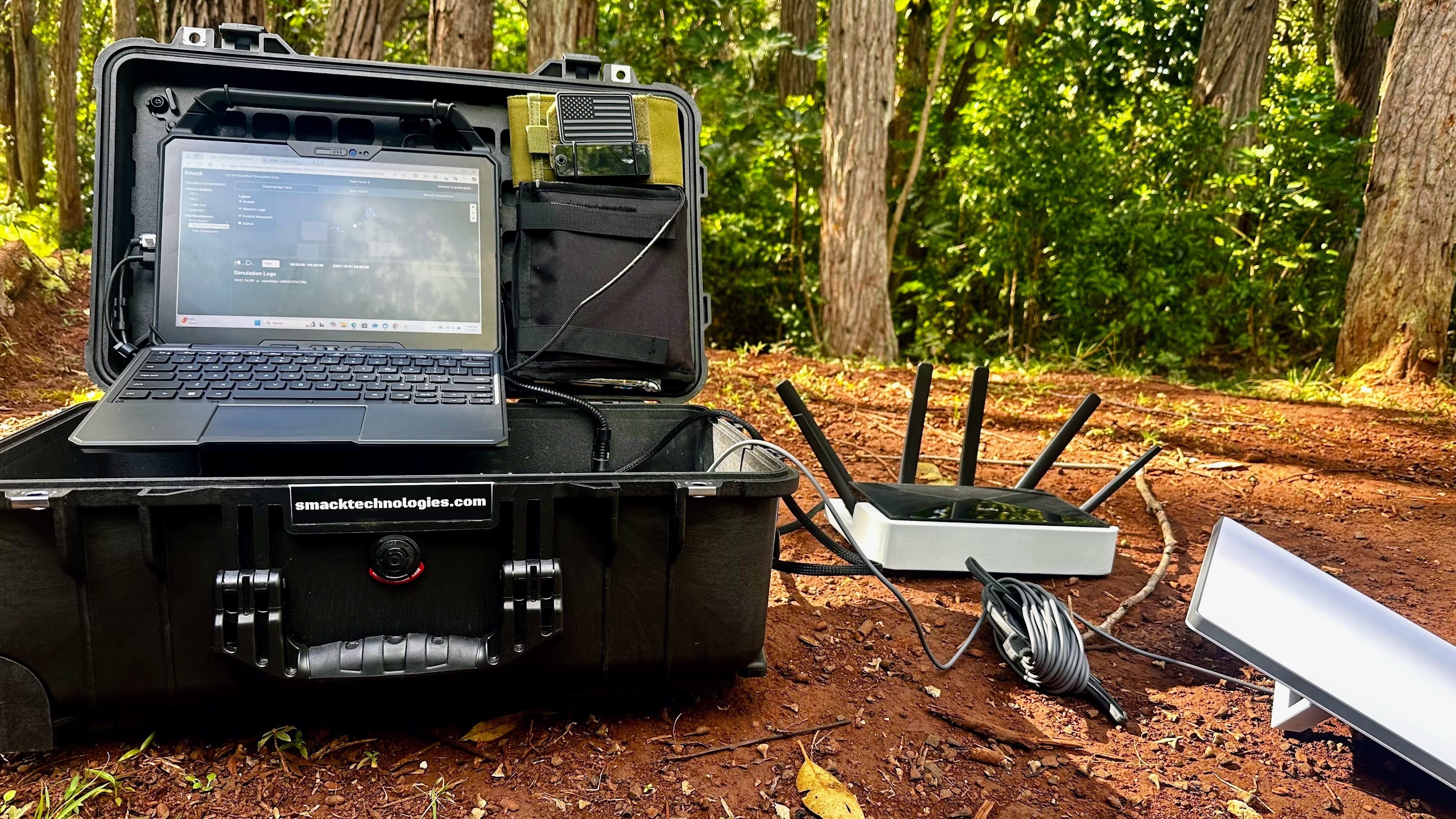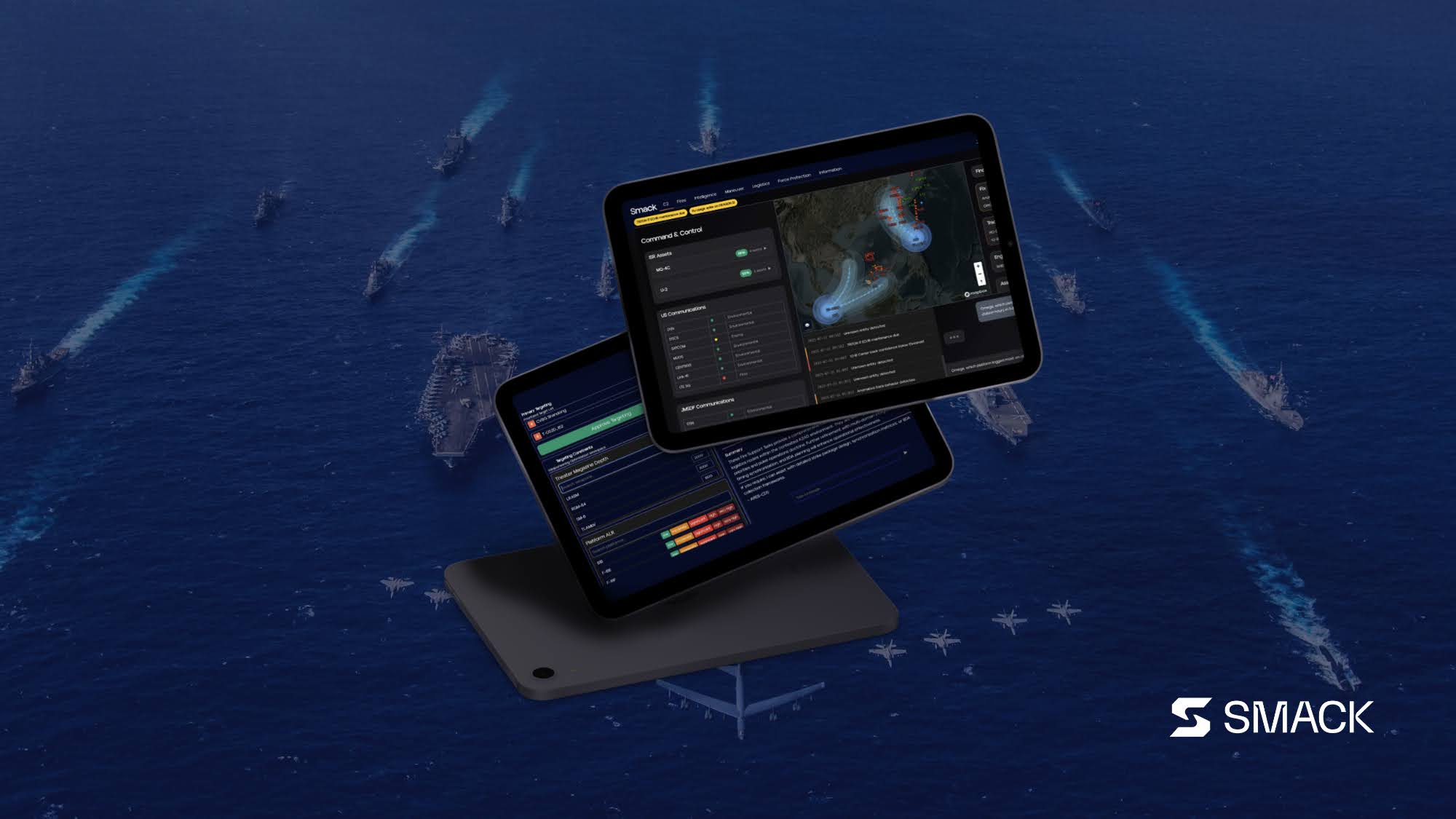Achieving Decision Dominance via coalition partner integration with Smack
The success of Decision Dominance hinges on integrating coalition partners into the kill chain in a trusted, secure, and scalable way.

The success of Decision Dominance hinges on integrating coalition partners into the kill chain in a trusted, secure, and scalable way.
That’s because, in any future conflict, U.S. forces will be fighting far from home in someone else’s backyard. If that theater is the Pacific, our allies will account for as much as 40% of necessary resources (bullets, gas, systems, etc.). In Europe, that number climbs as high as 60%. Victory means winning together, or not at all.
Unfortunately, significant challenges currently stand between the U.S. and successful coalition partner integration. Among these are:
- The absence of machine-to-machine sharing, caused by a mix of policy restrictions and technology constraints that prohibit scalable, real-time communication between partners.
- The lack of a common confidence scoring system that would allow specific data and requests to be passed between partners, with a full understanding of how COAs are built and weighted, while preserving the ability for both sides to set sharing parameters to filter sensitive information.
Below we’ll look at the current state of affairs and how Smack solves today’s partner integration problems.
The current state of coalition partner integration
Today, coalition partner integration relies almost entirely on air-gapped communications.
Liaisons must be either stationed directly in the room with partners to oversee what information can and cannot be shared, or sent episodically into allied/partner spaces with specific hand-written requests—often on a sticky note.
There are significant problems with both of these methods, starting with the fact that information sharing is limited to human-to-human speeds. This is not only slower and more dangerous for liaisons, but it’s prone to additional hurdles like translations, which take time and require vetted and validated translators.
This system is also entirely dependent on trust, which is a poorly-defined concept in the context of nation vs. nation warfare. Worse still, it can create knowledge deficits among partners and lead to the perception that the U.S. has access to potentially beneficial information that isn’t being shared with allies.
Every new challenge makes coordinated, informed, real-time decision making more difficult among coalition partners.
The Smack solution to coalition partner integration
Smack’s Alpha/Omega product suite is uniquely designed to solve the current problems with coalition partner integration.
Omega is Smack’s command-level stack powered by our proprietary deep-RL models. Think of Omega as the mothership. It builds multi-day pulse cycles in minutes and repairs them during execution.
Alpha is the edge stack for front line units and platforms. It uses lightweight agents trained by our deep-RL models to execute coordinated decision making and enable feedback at the edge, even in degraded comms environments.

Together, these two core Smack products serve as a machine-to-machine mesh enabling 2-way information exchange and decision making directly with our allies. Instead of relying on an intermediary system, for example, Japanese Omega can communicate directly with U.S. Omega, Australian Alpha with U.S. Alpha, and so on.
This 2-way data sharing is protected by Smack’s proprietary confidence scoring system, which allows the U.S. and our Allies/partners to share specific, high-confidence data and requests with one another while being able to set sharing levels that filter sensitive information. Similar to a zero-knowledge proof in cryptography, this scoring system enables partners to know with high confidence that an action must be taken, and that it is the correct action to take, without needing to know exactly why or how that decision was reached.
Contact Smack
For more information on Smack’s proprietary deep-RL technology and how it can be used to enable successful coalition partner integration, visit our Contact page or send us an email at smackit@smacktechnologies.com.


